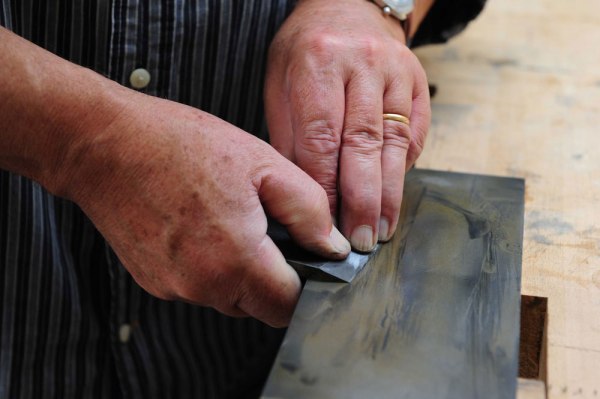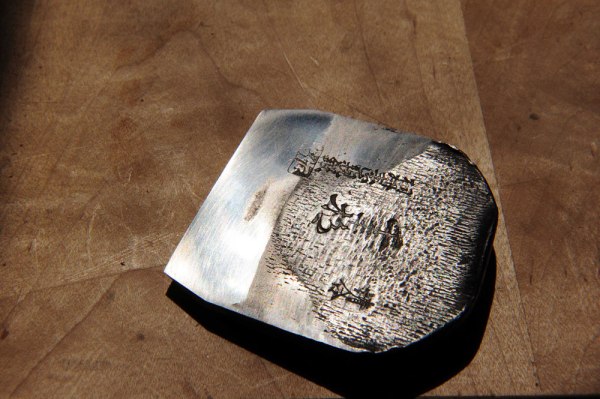
Japanese planes and the surface they promised to give. That is the goal. The shimmering hand-wrought surface that only a cutting iron in a handplane can give. I am hanging on for this, as it fits my need to put clear blue water between my furniture and the robot-driven, manufactured surface. That routine, intimidating perfection of industry that surrounds us. I wanted a human, imperfect surface, a surface that reminded us of the skilled hand struggling for perfection and failing. I wanted failure.
So I have bought this impressive piece of Japanese steel, but I have also in the process acquired an eBay habit that is disturbing my wife and children.
“Dad, why are you on the laptop during dinner?”
“You tell us to put the mobile phones away at the table.”
“And what is a snipe bid?”
I bought not only the old handmade plane iron and accompanying back iron, but also a couple of other planes. The more I got into this, the more I found I did not know about these planes.
When the blade arrived wit as beautifully wrapped and presented as the Japanese do with all their things. But it needed some work as rust and time had taken its toll. So I set to work on the back of the blade first.
I started with a #230-grit diamond plate. This is a coarse surface and, combined with Trend Lapping Fluid, is an effective way of removing a lot of metal fast. The other benefit is the metal plate itself is pretty flat so we are working toward a constant flat target.
Diamond plates are an expensive way of doing this. This one cost me nearly £25 and is no longer as coarse and effective. Bigger, more expensive plates are, in our experience, just as short-lived. Another way of doing this is a granite slab with #180-grit wet/dry sandpaper; we use this to keep stones flat.

I think I spent a good couple of hours getting hot, wet and dirty doing this. The black stuff that comes off the blade is an indication that the abrasive is working, and the slowness is an indication this blade is hard steel and that the blacksmith knew what he was doing.
What I am hoping is that some of the Samurai sword making history will have rubbed off on my plane iron. “Tamahagane” or “jewel steel” is the name of the steel they used to make swords. The process of hammering and folding, creating a supremely sharp edge with the contrasting quality of toughness. The kind of edge that would cut through three bodies at a time. Mmmm…
It was the hammering under heat, the forging, that makes steel better for us woodies – the time-consuming hammering that gets left out of most modern tool steel production. It makes a finer grain, sharper, edge-holding steel. I have seen and appreciated this during the past 30 years I have been using Japanese chisels.
That plane iron back was hard as blazes. The hollow that is worked into the back of all Japanese tools to save us time in getting that blade flat was being slowly removed by my flattening efforts. The pitting from the rust was pretty deep. If you can, avoid rust-pitted blades; they may be cheap on eBay, but you pay for that neglect.

I tested my diamond-stoned surface on a series of Japanese waterstones: #330-grit green to take out the lines of the diamond plate, #800 to take out the lines of the #330, then #3000 natural waterstone (not synthetic), then #6000-grit gold polishing stone, finishing with a #10,000 natural waterstone. I will why the natural waterstones soon. All of these stones are kept flat religiously with our system of using #180-grit wet/dry sandpaper on a granite slab after every use.
This flat business is pretty dull, but you only do it once. Your shiny, mirror-like blade back then only ever touches your finest stone. All this as it is necessary to get your blade in REALLY close contact with that #10,000 grit polishing stone right at the cutting edge.
Next time we go for sharp…..
— David Savage, http://www.finefurnituremaker.com